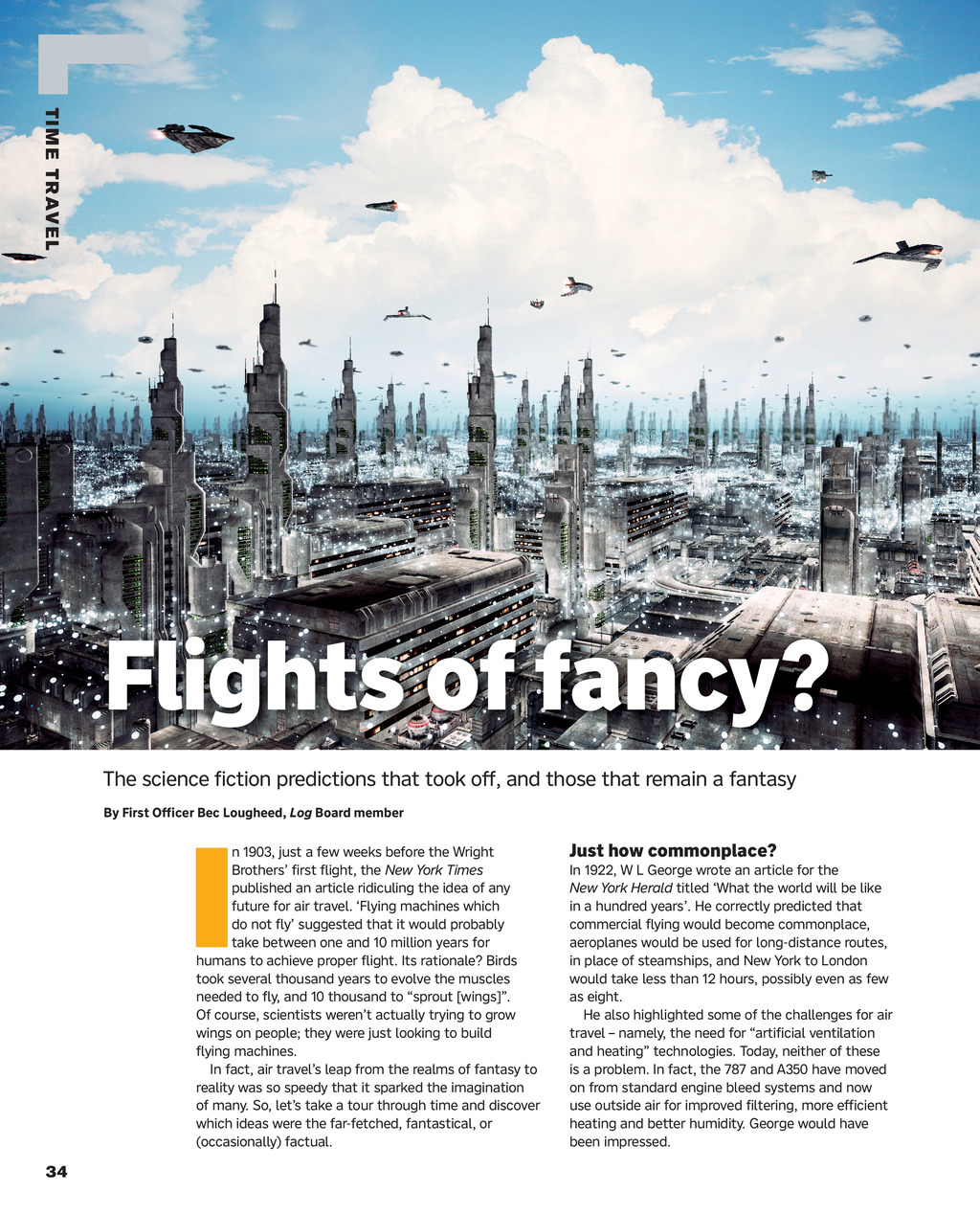




T I M E T R AV E L Flights of fancy? The science fiction predictions that took off, and those that remain a fantasy By First Officer Bec Lougheed, Log Board member I n 1903, just a few weeks before the Wright Brothers first flight, the New York Times published an article ridiculing the idea of any future for air travel. Flying machines which do not fly suggested that it would probably take between one and 10 million years for humans to achieve proper flight. Its rationale? Birds took several thousand years to evolve the muscles needed to fly, and 10 thousand to sprout [wings]. Of course, scientists werent actually trying to grow wings on people; they were just looking to build flying machines. In fact, air travels leap from the realms of fantasy to reality was so speedy that it sparked the imagination of many. So, lets take a tour through time and discover which ideas were the far-fetched, fantastical, or (occasionally) factual. Just how commonplace? In 1922, W L George wrote an article for the New York Herald titled What the world will be like in a hundred years. He correctly predicted that commercial flying would become commonplace, aeroplanes would be used for long-distance routes, in place of steamships, and New York to London would take less than 12 hours, possibly even as few as eight. He also highlighted some of the challenges for air travel namely, the need for artificial ventilation and heating technologies. Today, neither of these is a problem. In fact, the 787 and A350 have moved on from standard engine bleed systems and now use outside air for improved filtering, more efficient heating and better humidity. George would have been impressed. 34 THE LOG Sum 24 pp34-39 Time Travel.indd 34 13/06/2024 12:41